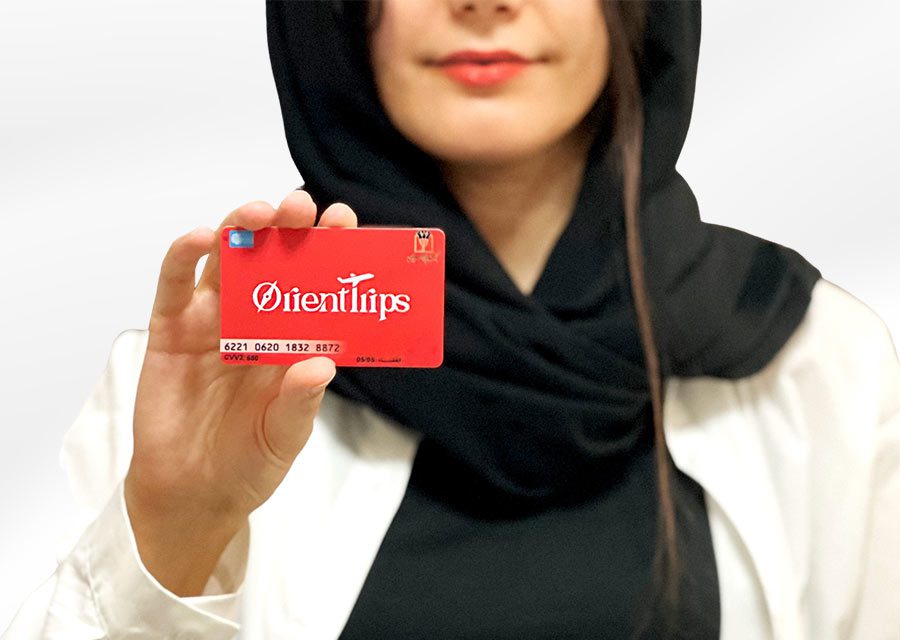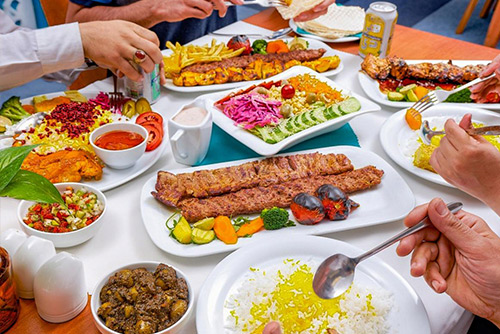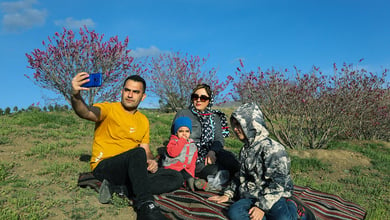
Chaharshanbe Suri, an ancient Persian festival dating back to 1700 BCE, marks the eve of the last Wednesday before the Persian New Year (Nowruz). This revered celebration, rooted in Zoroastrianism, symbolizes the triumph of light over darkness and purity over pollution.
Participants leap over bonfires, chanting for vitality and health, in a vibrant tradition blending cultural heritage with communal joy.
The name ‘Chaharshanbe Suri’ translates to ‘Wednesday Feast’ in Persian. It derives from the words ‘Chaharshanbe’ (Wednesday) and ‘Suri’ (red, fiery, or festive).
Contents
Chaharshanbe Suri 2025
سه شنبه، ۲۸ اسفند ۱۴۰۳
Tuesday, March 18, 2025
The celebration also includes other customs like the banging of pots and pans to ward off the last remnants of the passing year’s bad luck and misfortune. Additionally, there are fireworks, public dances, and a variety of street foods that create a festive atmosphere.
The Festival of Fire
This ancient festival, deeply rooted in Iranian culture, marks a unique tradition where people leap over bonfires, chanting “sorkhi-ye to az man, zardi-ye man az to,” which translates to “your fiery red color is mine, and my sickly yellow pallor is yours.” This symbolizes the exchange of a person’s paleness, sickness, and problems with the warmth and vibrancy of the fire, signifying a renewal.
The Festival of Fire (Chaharshanbe Suri) holds on the Last Wednesday of a year (which marks the arrival of spring). People hope for health and happiness through the coming year by lighting fires and embracing the light.
Iran, Azerbaijan, Iraq, Afghanistan, Tajikestan, and Turkey celebrate this ancient festival, dating back to at least 1700 BCE. Iranians celebrate an old tradition known as “Chahar Shanbeh Suri.”
It occurs on the last Tuesday evening of every Persian calendar year. Iranians gather with friends and family to celebrate and enjoy this occasion. Chahar Shanbeh Suri, or the “Festival of Fire,” serves as a prelude to Nowruz, which signifies the arrival of the spring season.
The celebration of Chahar Shanbeh Suri usually begins in the evening, with people creating bonfires in the streets and leaping over them.
In Iran, the emblematic festival of Chaharshanbe Suri revolves around the saying, “Sorkhi-ye to az man, zardi-ye man az to,” meaning “Your fiery red color is mine, and my sickly yellow pallor is yours.” This traditional phrase captures the festival’s essence, as participants leap over bonfires, symbolically exchanging their yellow pallor, indicative of illness and pain, for the fire’s vibrant red energy, signifying health and vitality.
Some believe that jumping over bonfires is a way to eliminate negative energy, sickness, and problems and to receive fulfillment, warmth, and energy in return. Chaharshanbe Suri serves as a cultural festival for many Iranians.
Chaharshanbe Suri Traditions
Chaharshanbe Suri, a captivating Iranian festival, occurs on the eve of the last Wednesday before Nowruz, symbolizing the triumph of light over darkness.
During this celebration, participants engage in the traditional act of leaping over bonfires, a gesture embodying purification and renewal. This festival is not only about fire-jumping; it encompasses various other rituals and customs, which we will delve into below.
Jumping over the fire
During the Chaharshanbe Suri festival in Iran, people practice an ancient tradition of jumping over the fire. The festival, occurring on the last Wednesday before the Persian New Year, brings Iranians together to celebrate the arrival of spring and the rejuvenation of nature.
Jumping over the fire plays a significant role in the festival, as people believe it brings good luck and protects against evil spirits.
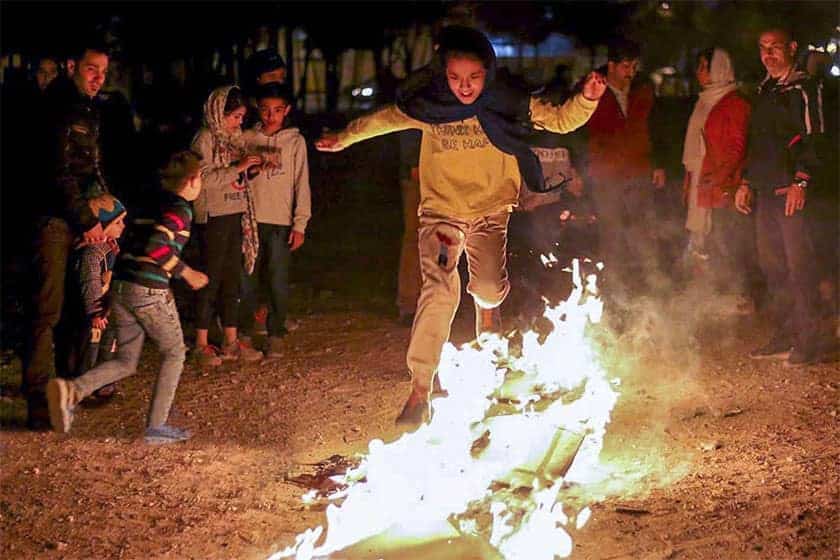
The Chaharshanbe Suri festival in Iran, celebrated with the tradition of leaping over bonfires, is locally known as “Chaharshanbe Soori,” which translates to “Red Wednesday.” This ritual, where flames symbolize the burning away of the past year’s misfortunes and the purification of the soul, embodies a transition from darkness to light and from winter to spring.
In anticipation of Chaharshanbe Suri, preparations commence several days in advance. Communities gather firewood, ready firecrackers and fireworks, and prepare special foods for the occasion. On the night of the festival, families and friends come together to light bonfires, often in their backyards or public parks.
The fire-jumping ritual is embraced by people across all age groups. As they leap over the flames, participants recite the phrase, “Sorkhi-ye to az man, zardi-ye man az to,” which means “May your redness be mine, and my paleness be yours.” This chant is believed to transfer one’s troubles and problems to the fire while inviting good fortune and blessings in return.
Although some Iranian officials have raised safety concerns about the fire-jumping practice due to accidents and injuries, the tradition remains a deeply rooted aspect of Iranian cultural heritage. It symbolizes unity, the celebration of spring’s arrival, and spiritual rejuvenation. This act reflects the resilience and strength of the Iranian spirit, reinforcing the message of hope and transformation even in challenging times.
Spoon-Banging in Chaharshanbe Suri

During Iran’s Chaharshanbe Suri festival, alongside the tradition of fire-jumping, the vibrant practice of spoon-banging holds a special place. This lively tradition involves children and young adults taking to the streets with spoons and other kitchen utensils, using them to create a symphony of sounds on pots and pans.
The origins of spoon-banging in Chaharshanbe Suri are somewhat enigmatic, yet it is widely believed to have originated as a method for the youth to herald the arrival of spring and ward off evil spirits. It’s thought that the clattering noise repels malevolent forces, paving the way for good fortune in the new year.
Over the years, spoon-banging has taken on new forms. Participants often integrate firecrackers and other noise-makers, and many decorate their utensils with colorful ribbons, flowers, and various embellishments, showcasing their creativity.
The practice usually unfolds on Chaharshanbe Suri evening. Groups of children and young adults, equipped with their decorated utensils, roam the streets, enthusiastically generating as much noise as possible.
Smashing The Pot (kūza-šekanī)

Another unique tradition that is a part of the Chaharshanbe Suri festival in Iran is the practice of smashing the pot, or “kūza-šekanī” in Persian. This tradition involves breaking a clay pot filled with nuts or sweets as a way to bring good luck and prosperity in the coming year.
The tradition of smashing the pot during the Chaharshanbe Suri festival in Iran, believed to have originated in pre-Islamic Persia, has unclear origins.
Historically, the pot symbolized the old year, and breaking it marked the end of that year and the start of a new cycle. Today, this tradition is primarily seen as a way to bring good luck and prosperity in the upcoming year.
The pot used in the tradition is typically made of clay and filled with a variety of nuts, sweets, and sometimes coins. It is hung from a rope or cord in the center of a gathering of people. Participants take turns blindfolding themselves and attempting to smash the pot with a stick or other blunt object, while others dance and sing around them.
Skill, precision, and a bit of luck are essential for successfully smashing the pot. It is believed that breaking the pot brings the individual good fortune and prosperity for the upcoming year. The nuts and sweets spilling from the broken pot symbolize abundance and prosperity.
Fortune Telling (fāl) in Chaharshanbe Suri

Fortune-telling, or “fāl” in Persian, is another popular tradition that is a part of the Chaharshanbe Suri festival in Iran. This tradition involves the use of various methods to predict one’s fortune or fate for the coming year.
Fortune-telling, deeply rooted in Persian culture, intertwines with mysticism and spirituality, offering insights into one’s future to better prepare for upcoming challenges and opportunities.
During the Chaharshanbe Suri festival, various fortune-telling methods are employed, with divination or “tarot” cards being particularly popular. The fortune-teller lays out these cards in a specific pattern, interpreting their meanings from the cards’ positions and arrangements.
Another common method of fortune-telling involves the interpretation of dreams. Participants will share their dreams with the fortune-teller, who will then offer insights into what the dream might mean and how it could impact the individual’s future.
Palmistry, or the interpretation of the lines and markings on the palm of the hand, is also a popular method of fortune-telling during the Chaharshanbe Suri festival. The fortune-teller will examine the lines on the palm and use them to predict the individual’s future.
Despite its popularity, the practice of fortune-telling is not without controversy in Iran. Some view it as a superstitious and un-Islamic practice, while others argue that it is an important part of Persian culture and tradition.
Regardless of these debates, many Iranians continue to embrace the tradition of fortune-telling during the Chaharshanbe Suri festival. It is a way for individuals to connect with their spirituality and to seek guidance and insights into their future.
Burning Rue (Esfand)

One of the most ancient and significant traditions during the Chaharshanbe Suri festival in Iran is the burning of rue, or “esfand” in Persian. This tradition involves the burning of dried leaves and twigs of the rue plant to ward off evil spirits and negative energies.

For centuries, Persian culture has revered the use of rue for its spiritual and medicinal benefits. Ancient beliefs held that burning rue could purify the air and shield against diseases. Even today, rue remains a staple in traditional medicine, celebrated for its healing properties.
The Chaharshanbe Suri festival elevates the significance of burning rue. People believe that the smoke can dispel evil spirits and negative energies, paving the way for new beginnings in the year ahead.
To partake in this tradition, individuals gather dried leaves and twigs of rue, placing them in a metal or clay container for ignition. As the flames consume the rue, the emanating smoke, believed to cleanse the air and purify surroundings, carries prayers and invocations over those present, beckoning positive energies and good fortune.
Dropping the Showl (šāl-andāzī)
In Chaharshanbe Suri night after extinguishing the fire, the youths tie several handkerchiefs to each other to make a long, colorful rope.
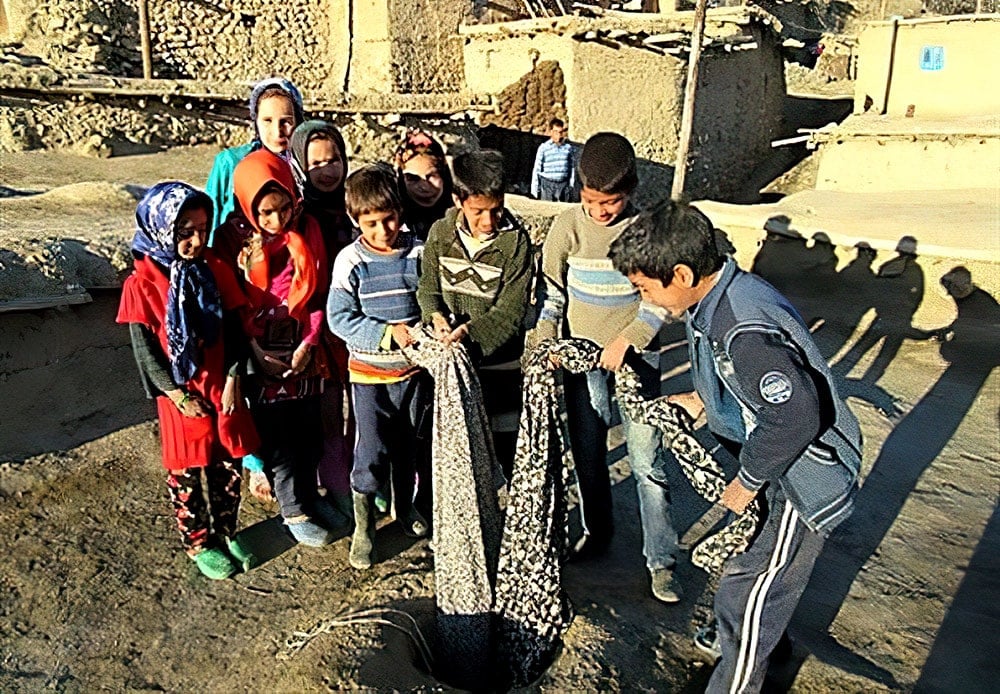
Then, they go up to the rooftops of their relatives’ or neighbors’ houses, either by stairs or over the wall, and bring the rope into the house through a hole on the roof made for the smoke from the hearth or bread oven.
Next, with a few loud coughs, they alert the homeowner of their presence. The household members, upon seeing the rope, place what they have prepared in the corner of a shawl, tie it, and then give a gentle tug to signal the ‘shawl thrower’ that the ‘Suri gift’ is ready. The shawl thrower then pulls it up.
What’s inside the handkerchief is both a fortune and a Chaharshanbe Suri gift; it’s used for fortune-telling. For example, if the gift is a piece of bread, it signifies blessing. Sweets indicate sweetness and joy; pomegranate signifies bringing children; walnuts signify a long life; almonds and hazelnuts represent toughness and patience; raisins indicate abundance and rainfall. Today, especially in the provinces of Hamadan and Zanjan, the tradition of shawl throwing still exists.

The tradition of shawl throwing, known as ‘Shal Salmaq’ in East Azerbaijan, remains a vibrant custom in some villages. This unique practice involves young boys and teenagers dropping a shawl through the roof’s hole—used for oven smoke and ventilation, referred to in Turkish as ‘Baca or Baja’.
Upon receiving the shawl, the homeowner attaches nuts and sweets to one of its corners for the boy to retrieve. However, if the boy has an interest in the homeowner’s daughter, he leaves the shawl untouched as a sign of his intentions. Should the family accept his interest, they signal their agreement by tying a sign to the shawl, thus fostering connections and potential unions within the community.
A Wish-Granting Snack (Ajeel e Chaharshanbe Suri)
Ajeel e Chaharshanbe Suri, a traditional snack savored during the Chaharshanbe Suri festival in Iran, holds a special place in the festivities. Many believe this delightful mix has the power to grant wishes, with its consumption heralding good luck and prosperity for the year ahead.
Comprising a blend of dried fruits, nuts, and seeds—including pistachios, almonds, raisins, and pumpkin seeds—each ingredient in Ajeel e Chaharshanbe Suri symbolizes life’s different facets: health, wealth, and happiness. This thoughtful selection underscores the snack’s significance, making it a must-have for those seeking to embrace the festival’s spirit fully.

Preparing Ajeel e Chaharshanbe Suri transforms into a communal celebration, as families and friends unite to craft this festive snack. Together, they blend the ingredients, allocating the mix into small bowls or trays for everyone to share.
As participants indulge in this snack, they’re inspired to make wishes and set intentions for the year ahead. The belief in the snack’s wish-granting abilities is thought to help manifest these aspirations, ushering in a period of good fortune and prosperity for all involved.
BOOK ONLINE
Isfahan Hotels
The tradition of Ajeel e Chaharshanbe Suri is believed to have originated from ancient Zoroastrian rituals that were practiced in Iran before the arrival of Islam. Zoroastrianism is one of the oldest religions in the world, and its teachings emphasize the importance of good thoughts, good words, and good deeds.
The consumption of Ajeel e Chaharshanbe Suri is seen as a way to align oneself with these principles and to attract positive energy and good fortune in the coming year. It is a way for individuals to connect with their spirituality and to seek blessings from the divine.
In addition to its spiritual significance, Ajeel e Chaharshanbe Suri is also a delicious and nutritious snack that is enjoyed by people of all ages. The mix of dried fruits, nuts, and seeds provides a range of vitamins, minerals, and antioxidants that are essential for good health.
Ancient Origin of the Chaharshanbe Suri
The festival of Chaharshanbe Suri traces back to ancient Iranian rituals. Historically, Iranians celebrated Hamaspathmaedaya (Hamaspaθmaēdaya), the last five days of the year, in honor of the dead, now known as Farvardinegan.
Ancient beliefs held that during this time, the spirits of the deceased would reunite with the living. The seven holy immortals (Aməša Spənta) received honors, with a formal ritual farewell marking the New Year’s dawn.
Chaharshanbe Suri also aligned with celebrations of fire and human creation. By the Sasanian Empire era, the festival split into two segments: the lesser and the greater panje. The “lesser panje” was dedicated to children’s souls and those who passed sinlessly, while the “greater panje” commemorated all souls, embodying a deep-rooted belief in the spiritual realm.

Chaharshanbe Suri During Qajar Era
A custom once in vogue in Tehran was to seek the intercession of the so-called “Pearl Cannon” (Tup-e Morvārid) on the occasion of Chaharshanbe Suri. This heavy gun, which was cast by the foundry-man Ismāil Isfahāni in 1800, under the reign of Fath-Ali Shah of the Qajar dynasty, became the focus of many popular myths.
Until the 1920s, it stood in Arg Square, to which the people of Tehran used to flock on the occasion of Chaharshanbe Suri. Spinsters and childless or unhappy wives climbed up and sat on the barrel or crawled under it, and mothers even made ill-behaved and troublesome children pass under it in the belief that doing so would cure their naughtiness.
These customs died out in the 1920s, when the Pearl Cannon was moved to the Army’s Officers’ Club. There was also another Pearl Cannon in Tabriz. Girls and women used to fasten their dakhils (pieces of a paper or cloth inscribed with wishes and prayers) to its barrel on the occasion of Chaharshanbe Suri. In times, the cannon had been used as a sanctuary for political or non-political fugitives to be immune to arrest or to protest from family problems.
Sadegh Hedayat, an Iranian writer of prose fiction and short stories, has a book with the name of this cannon, Tup-e Morvārid, that criticize the old beliefs in Iranian folklore. The book also mentions the origin of the Pearl Cannon.
Today, the Pearl Cannon is placed in the opening of the Building Number 7 of the Ministry of Foreign Affairs at 30th Tir Avenue, and the Cultural Heritage Organization of Iran is still in argument with the ministry to displace the gun to a museum.
Other than Iran, in what countries is Nowruz celebrated?
In neighboring countries such as Afghanistan and Tajikistan, Chaharshanbe Suri is also celebrated with bonfires and Esfand, but there are some differences in the way it is celebrated. In Afghanistan, for example, it is common to prepare special foods such as Samanak, a sweet dish made from wheat germ, and to engage in traditions such as Guli Surkh, which involves exchanging gifts of flowers and sweets.
Similarly, in Tajikistan, Chaharshanbe Suri is celebrated with traditional foods such as Plov, a rice dish, and with traditions such as Haft Sin, which involves setting up a table with seven items that begin with the letter “S” to symbolize good luck and prosperity.
What To Eat in Chaharshanbe Suri
One of the traditional foods of Chaharshanbe Suri is Ash Reshteh, a thick and hearty soup made with beans, lentils, and noodles. It is typically garnished with fried onions, dried mint, and Kashk, a type of fermented yogurt. Ash Reshteh is believed to bring good fortune and prosperity to those who consume it during Chaharshanbe Suri.
Another popular dish during the festival is Sabzi Polo ba Mahi, a fragrant rice dish that is served with grilled fish. The rice is typically flavored with herbs such as dill, parsley, and coriander, and is cooked with fragrant saffron. Sabzi Polo ba Mahi represents the hope for a bountiful harvest in the coming year.
Kookoo Sabzi is also a popular dish during Chaharshanbe Suri. It is a type of herb frittata made with eggs, parsley, coriander, and chives. Kookoo Sabzi is typically served with flatbread and yogurt, and is believed to represent new beginnings and growth.
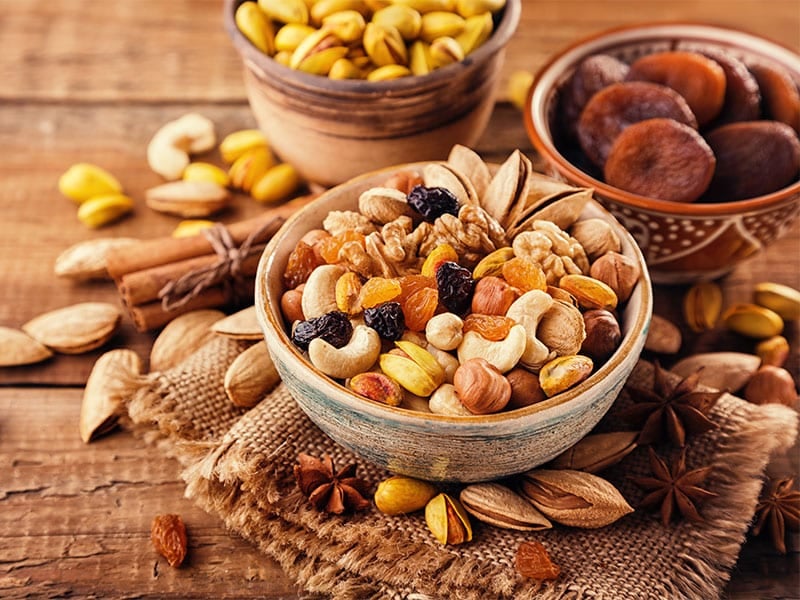
Another festive food during Chaharshanbe Suri is Ajeel, a mixture of nuts, dried fruits, and seeds that is often consumed during the celebrations. Ajeel is believed to bring good luck and fortune in the coming year.
Finally, Halva is a sweet treat that is often prepared during Chaharshanbe Suri. It is made with sesame paste, sugar, and rose water, and is typically served with tea. Halva is believed to symbolize happiness and joy, and is a delicious way to end the festivities.
Where to go in Chaharshanbe Suri?
Chaharshanbe Suri is a widely celebrated festival in Iran, and there are many places where you can go to experience the festivities. Here are some suggestions:
Parks and public spaces
Many parks and public spaces throughout Iran host Chaharshanbe Suri celebrations, with bonfires and other traditional activities. These events are usually open to the public and are a great way to experience the festival with locals.
Rad More: Chaharshanbe Suri in Tehran: What Does the Capital Look Like?
Traditional neighborhoods
Some of Iran’s older neighborhoods have particularly lively Chaharshanbe Suri celebrations, with many families participating in traditional activities such as jumping over bonfires, spoon-banging, and smashing pots.
Private gatherings
Chaharshanbe Suri is also commonly celebrated in private homes, with families and friends gathering together to share traditional foods and engage in traditional activities.
If you are traveling to Iran during Chaharshanbe Suri, it is a good idea to ask locals for recommendations on where to go and what to do. You may also want to check with your hotel or tour operator to see if they are offering any special Chaharshanbe Suri events or activities.
Regardless of where you go, be sure to dress appropriately for the weather and bring appropriate footwear for jumping over bonfires and engaging in other outdoor activities.
Chaharshanbe Suri in Photos











Read More
